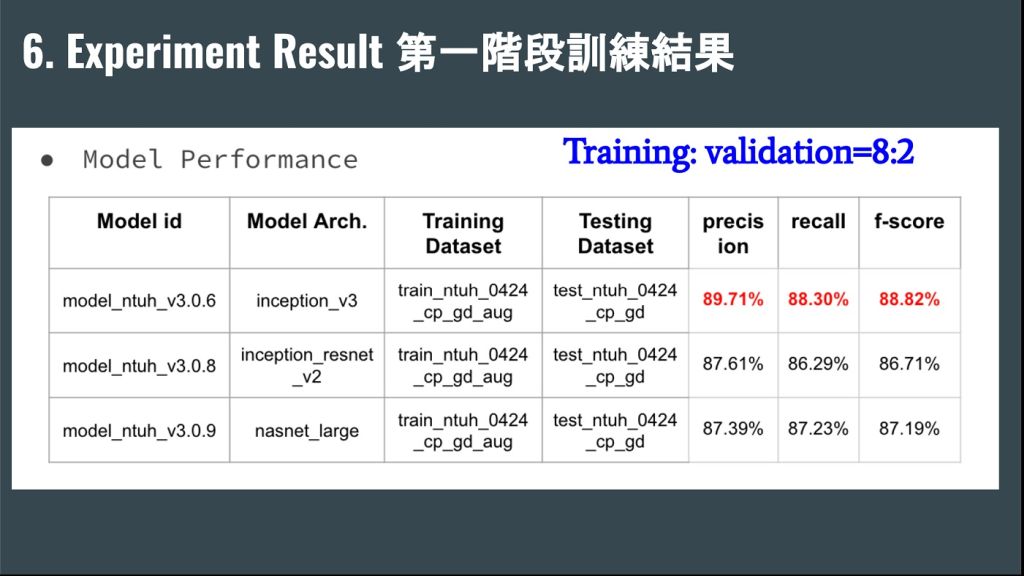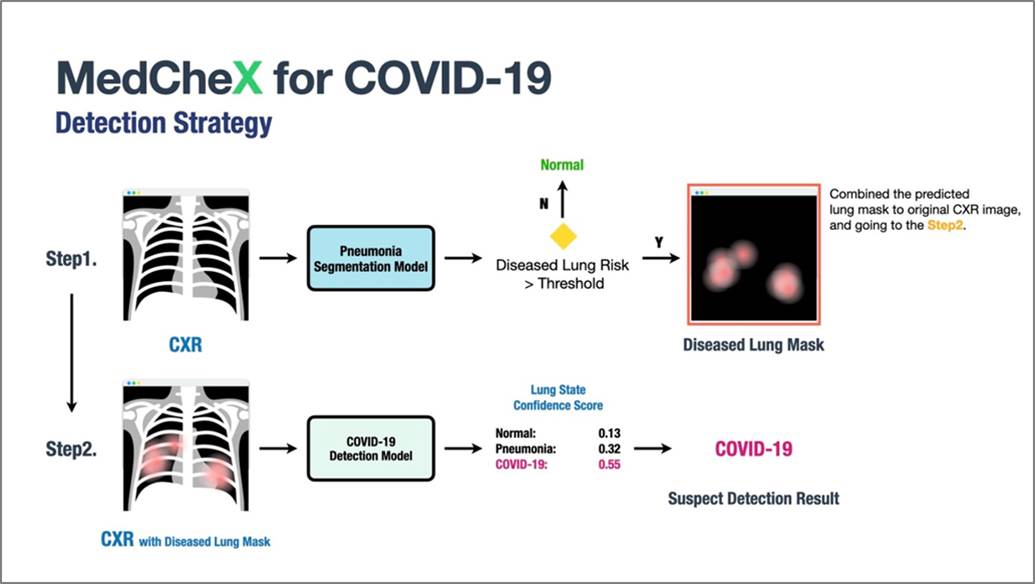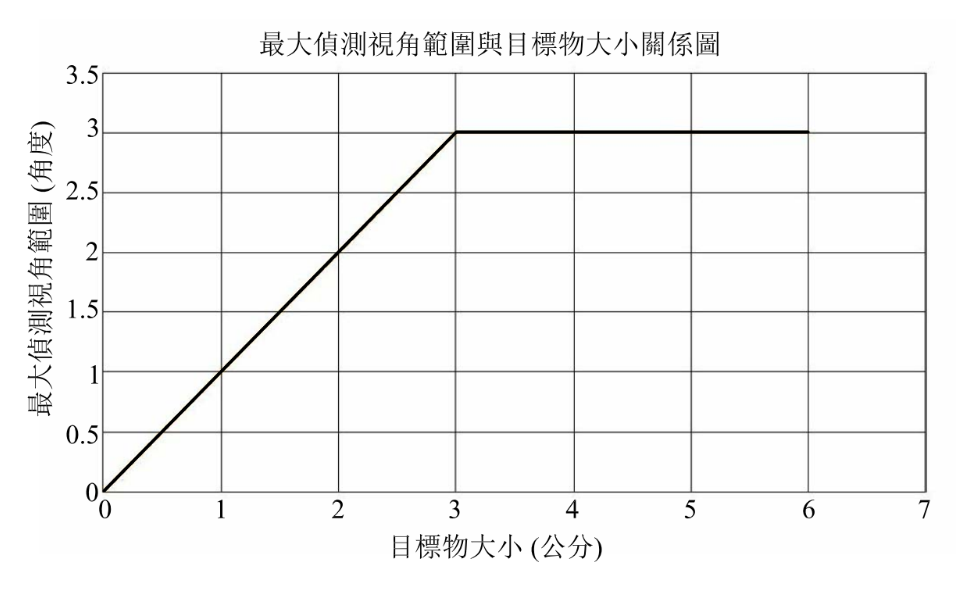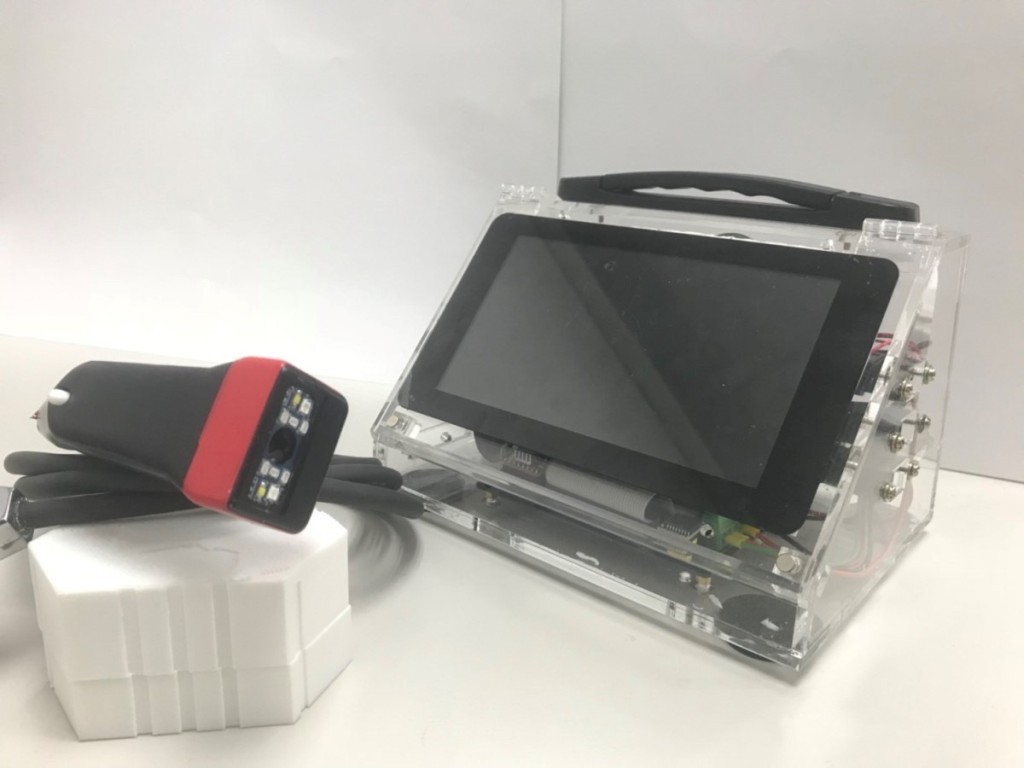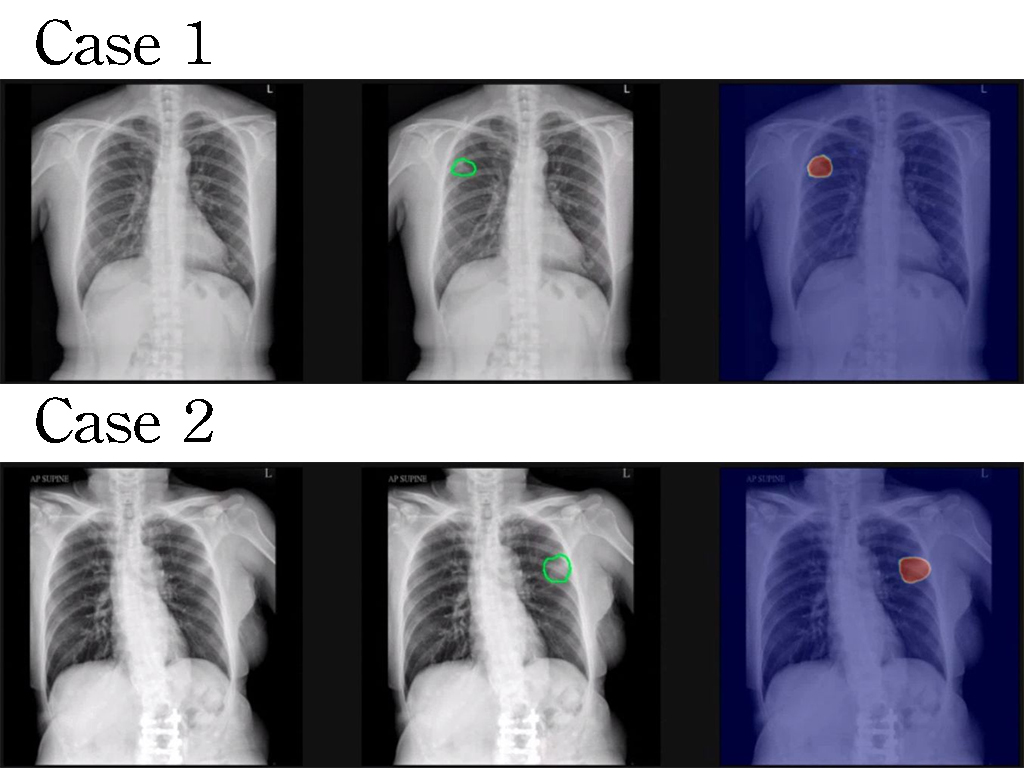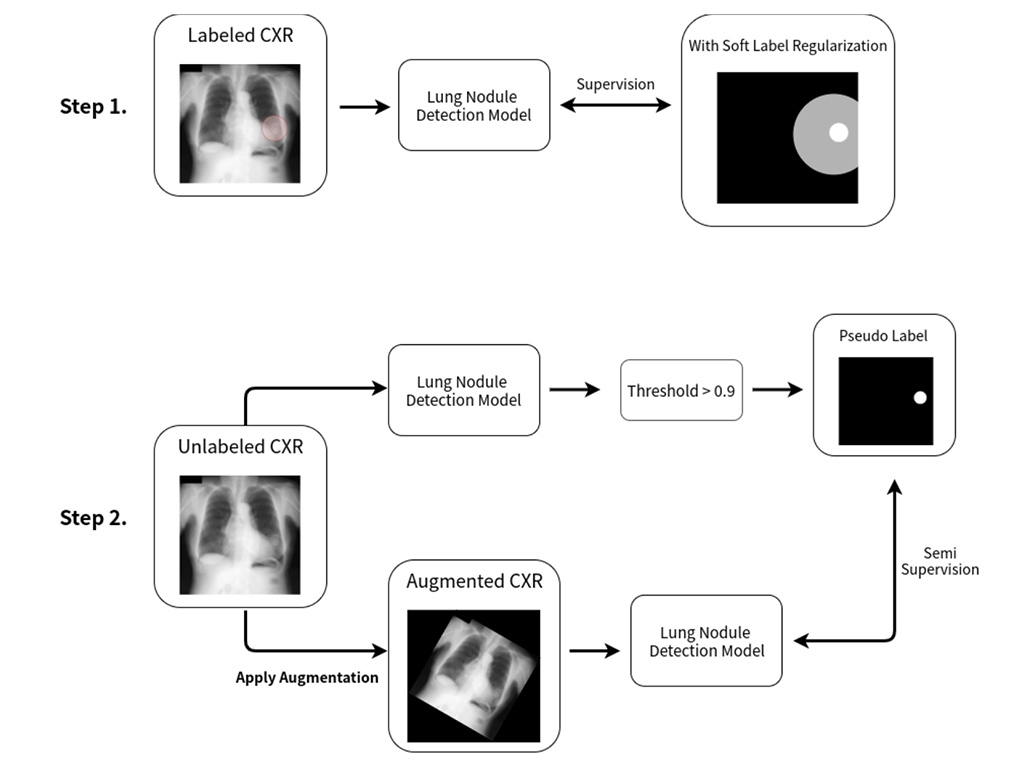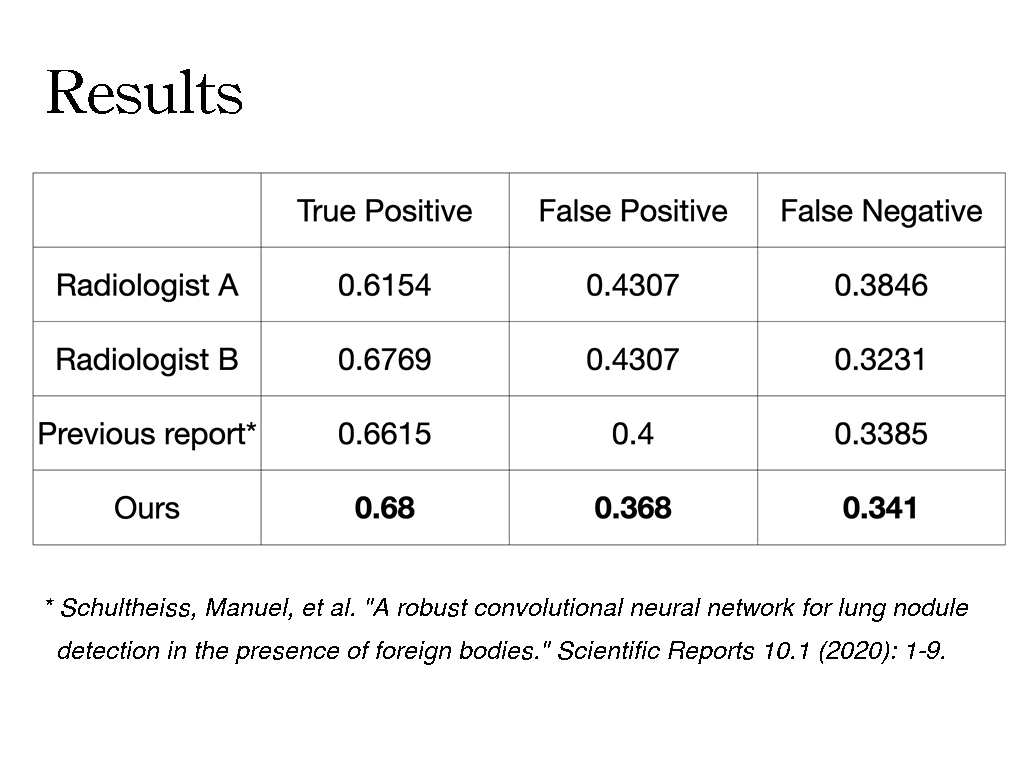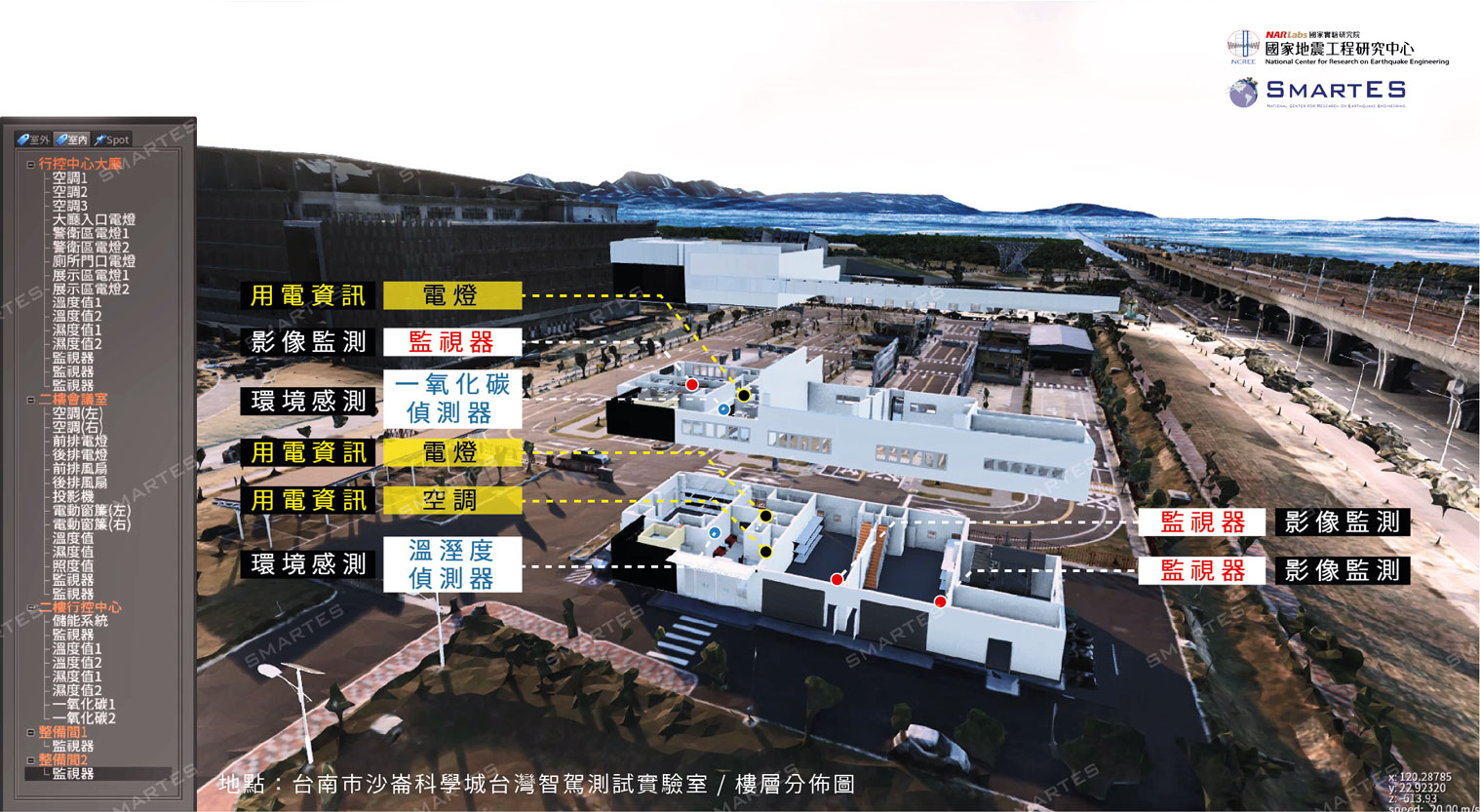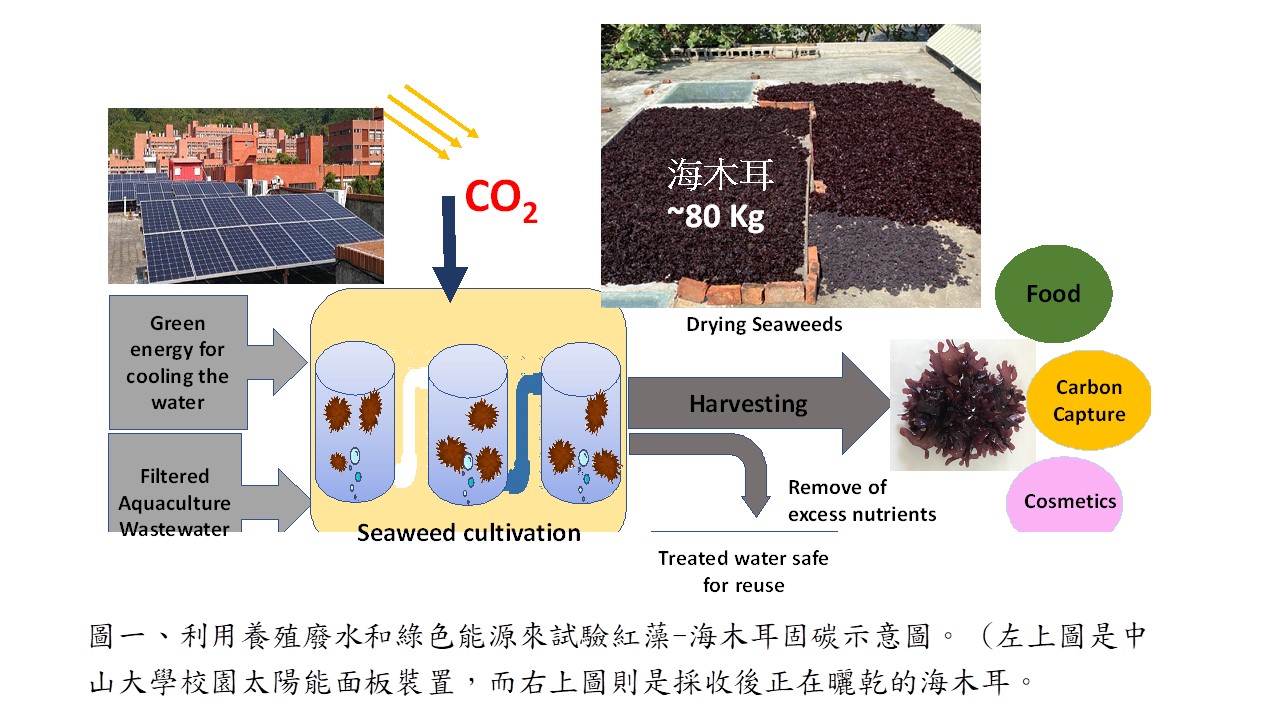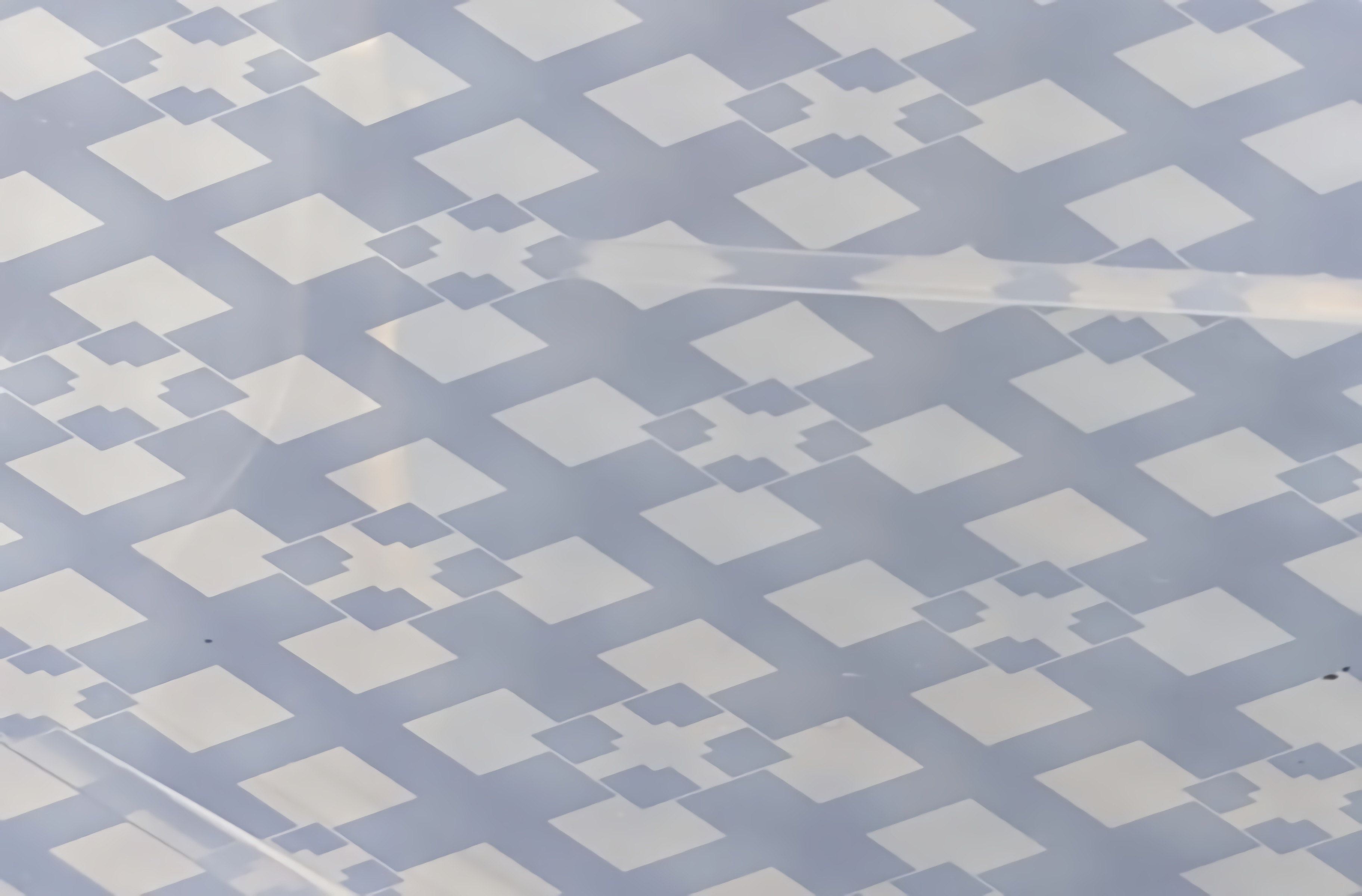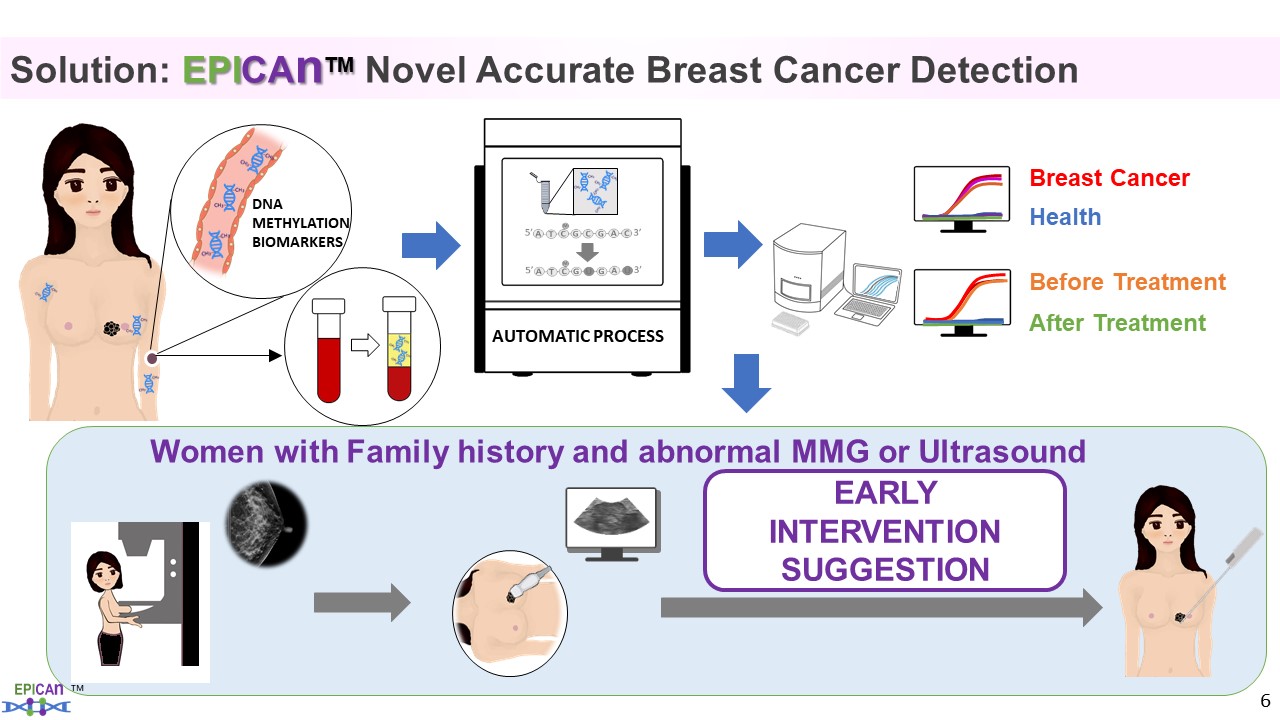| Technical Name |
運用人工智慧技術建構胸腔X光影像偵測早期肺癌病灶模型 |
| Project Operator |
National Cheng Kung University |
| Project Host |
蔣榮先 |
| Summary |
With the rise in computing power, deep-learning based computer-aided diagnosis systems have gained interest in the research community. Our system process the images to assist doctors to determine whether the patients have nodules in lungs. Meanwhile, we utilized the Feature Pyramid Network to extend the receptive field on the convolutional kernel, which improved the performance on the nodule detection with various locations in CXR. The semi-supervised learning mechanism also achieves the way of soft-annotation to reduce human effort in medical image annotation.
|
| Technical Film |
|
| Scientific Breakthrough |
"With radiologist’ manually labeled images as target examples, we utilize the segmentation model as first stage to identify potential hot spot areas. Meanwhile, we utilized the Feature Pyramid Network to extend the receptive field on the convolutional kernel.
The German research team of Schultheiss et al. ranks as top of the teams using deep learning method for lung nodule detection. The team published their work in Nature’s Scientific Reports in 2020. Our AI model outperforms the research team of Schultheiss et al. in 2021."
|
| Industrial Applicability |
"Lung cancer is a major cause of death worldwide. As early detection can improve outcome, regular screening is of great interest. Regular screening with medical imaging methods is beneficial.
Deep learning-based computer aided CXR diagnosis systems have proven their ability of identifying nodules in radiographiesthus may assist radiologists in clinical practice.
The aim of this research was to train a deep learning-based AI detector for the task of pulmonary nodule detection. In summary, the presented AI method has the potential to help radiologists during clinical routine."
|
| Matching Needs |
天使投資人、策略合作夥伴
|
| Keyword |
Lung Cancer Medical Image Deep Learning Smart Medicine Machine Learning Artificial Intelligence Image Processing |

